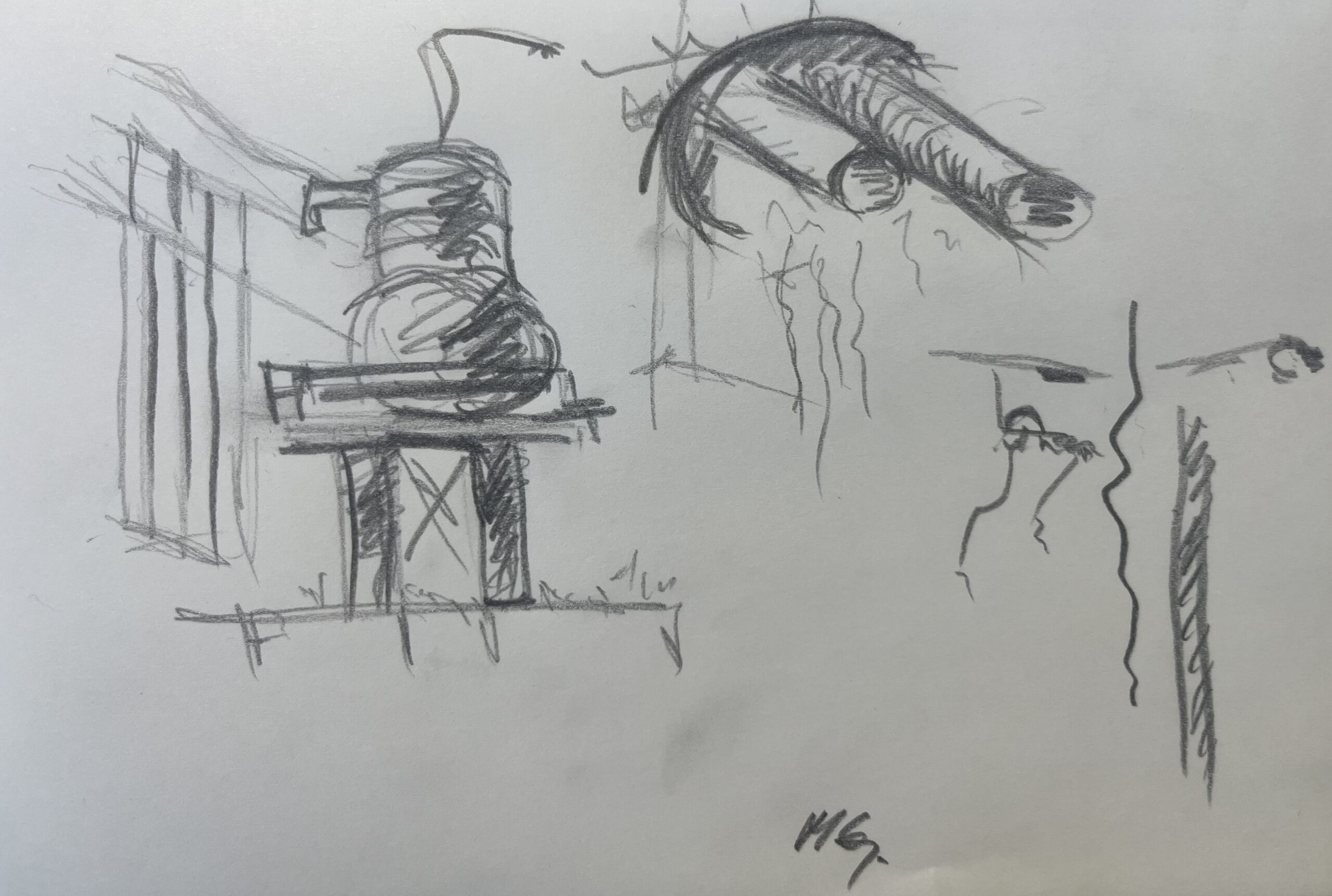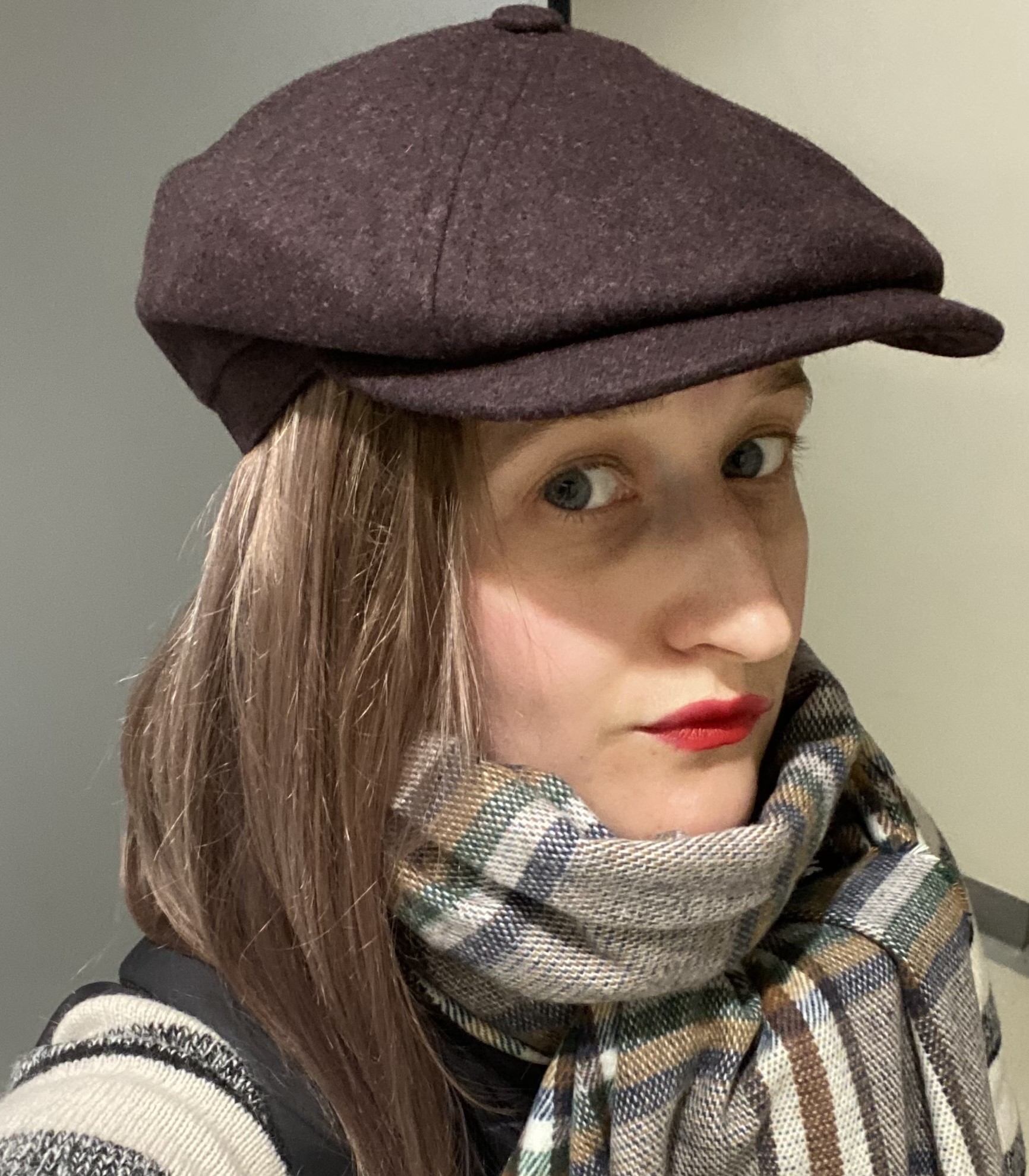
Visiting one post-Soviet state, you can then recognize it in all others – the similar patterns of urban planning and the identical buildings, structures, roads, pipes, wires, tiles, etc. However, an outsider delving inside under the extreme familiarity of the material environment finds an extreme “strangeness” of social interactions and practices. The “Outside In” series is about emplaced paradoxes and nuances. It spotlights the mundane in Armenia’s peripheral locations, where the seemingly unspectacular encounters with people and things allowing us to capture the unique features of the territory.
Listen to the article.
Outside In
Essay 14
The Boiler Room
Asha* and I trudged uphill along a dusty road flanked by multi-storey apartment buildings with adjacent agricultural plots and makeshift outbuildings. If located in New York or London, scholars and journalists alike would most probably praise these as eco-friendly community gardening attempts, charming grassroots placemaking initiatives, or tactical urbanism interventions. However, in Ajidzor, this DIY culture is anything but a hip development or a joyful pursuit of leisure. Preoccupied by these thoughts, I looked up to see the hulking remains of some industrial or utility building in the distance. Switching to a mix of Russian and Armenian, I asked Asha about it:
This is the boiler room [Rus.: kotelnaya].
What happened to it?
They destroyed it.
Who are they?
The power elites [Rus.: vlasti; Arm.: ishkhanutyun], Ter-Petrosyan [Levon Ter-Petrosyan, president of Armenia 1991–1998], Kocharyan [Robert Kocharyan, president of Armenia 1998–2008] and their friends… They destroyed and sold off everything…
Upon reaching the boiler room, I stepped into its cavernous spaces, now completely empty. The roof was gone. No equipment was to be seen; all the pipes had been severed. The bare peeling walls with rusty smudges still had marks of torn-out copper wiring and missing radiators. Under the windows, only hooks were left where radiators once hung. The floor was covered with debris—cement chips, plaster, glass, metal parts. It was as if a hurricane had gone through here sweeping things away and leaving behind only these pitiful remains.
The Plant
Among the most remarkable and spectacular ruins in Ajidzor is the industrial plant. I recall when Gor, its owner, once took me and my colleagues on a tour. Walking through the spacious premises overtaken by decay, where nothing was functional, abandoned equipment was caked in mud and dust, he spoke of business hurdles, complained about corruption, and the soaring cost of gas. Gor asked us not to take pictures, hinting at competitors. It was a very surreal experience. As we were leaving, he pointed to the sky towards an airplane and said:
Look, you see the white trail after the plane? This white trail is poison. They are trying to poison us…
Obscuring Pronouns
One of my colleagues has a distinctive way of discussing political issues in Armenia. Whenever he speaks on these matters, he habitually uses the pronouns “we” and “they” to assign agency behind various processes. What fascinates me is how fluid and context-dependent these groupings are. Depending on the particular topic of conversation, the demarcation between “we” and “they” shifts, being redrawn in different ways. Sometimes, “we” refers to Armenians as an ethnic group, while “they” represents other ethnicities or foreign powers. Other times, the same pronouns seem to categorize distinct sets of actors within Armenia itself. This constant reconfiguration often leaves me confused about what or whom he is specifically referring to at any given moment. My attempts to seek clarification have since evolved into an inside joke between us—one of those shared quips that appear incomprehensible to outsiders.
The ethnographic vignettes about the boiler room and the plant illustrate this phenomenon of othering, as well as the processes of meaning-making. In Asha’s interpretation, “they” referred to a predatory capitalist-state alliance within Armenia, responsible for deliberately wrecking socialist enterprises and infrastructures to appropriate profits. In contrast, Gor used “they” to describe something external—a force that hovered between an imaginary “world government” and the Azerbaijan-Turkey coalition. Through these narratives, which often incorporated conspiracy theories, my interlocutors sought to grasp and make sense of their lived reality marked by loss, absence, and proliferation of discarded objects. Much like the language of the Soviet period, using the third-person plural pronoun “they” served as a way of distancing oneself and, to some extent, denoting a loss of autonomy and control within rigid and hierarchical power structures. It was a way of projecting culpability outward, while at the same time shielding oneself from the moral weight of complicity. “We,” on the contrary, denoted a collective with whom the speaker expressed solidarity.
While the independent Armenian state may have lacked the resources or political will to sustain the centralized Soviet heating system or support industry, it was the ordinary residents of Ajidzor and surrounding areas who physically disassembled the buildings and infrastructure. When I asked Asha about the fate of the equipment and pipes in the boiler room, he grunted and simply said, “Pilfered [Rus: rastashili],” using the verb without the pronoun and being reluctant to clarify further. What was clear, however, was that Asha reserved less judgment for those who “pilfered” than for those who “destroyed.”
The disassembling was not a singular or haphazard act but rather came to be a livelihood—or even survival—strategy within the disorder, dispossession and impoverishment in the course of postsocialism. As suggested by social anthropologist Martin Saxer, this strategy was not so different from foraging wild herbs, berries, or mushrooms. During state socialism, places like the boiler room and the plant were, at least de jure, regarded as common, i.e. people’s good. Now in their wrecked state, they presented common grounds for foraging of everything that presumably had value. Wires were pulled, metal was cut, and pipes were dug up, either meticulously or in a rush to outpace competitors. Valuable metals were sold as scrap, while materials that could not be sold were repurposed. Walking through Ajidzor today, one can see the remnants of this disassembling everywhere. Cut-off pipes, metal cords, and radiators have been repurposed into fences surrounding private houses and land plots. Metal sheets of all kinds are used to cover roofs and construct various housing extensions and outbuildings. Foraged materials from the plant and the boiler room have found new lives as spare parts for household objects, such as DIY-made wood-burning stoves, shelves and screens.
Attributing destruction to “they” is not just an effort by my interlocutors to assign agency to powerful forces beyond local control. It reflects a recognition of forces so overwhelming that resisting them feels nearly impossible. By attributing the destruction to a vague “they,” my interlocutors create a linguistic loophole that distances them from their own role in disassembling. The physical deconstruction of the boiler room and the plant is reframed as the work of an abstract “other,” even though it was a collective endeavor in which they themselves participated, like gleaners who came after the reapers.
This tracing of the shifting boundaries between “we” and “they” reveals not only the fluidity of identity and responsibility but also deeper struggles for autonomy, power and recognition. In the end, the pronouns we choose—and the narratives we construct around them—are as much about self-preservation and self-representation, as they are about truth, whatever truth means in our post-truth world.
*Author’s note: Asha is a character first mentioned in the essay “Sense of Survival”. The name of the character, as well as the name of the town, are pseudonyms for data protection reasons. The text is written drawing partially on data collected with financial support from the European Research Council (ERC) under the European Union’s Horizon 2020 research and innovation programme (grant agreement no. 865976).

Drawing by Maria Gunko.
See all [Outside In] articles here


